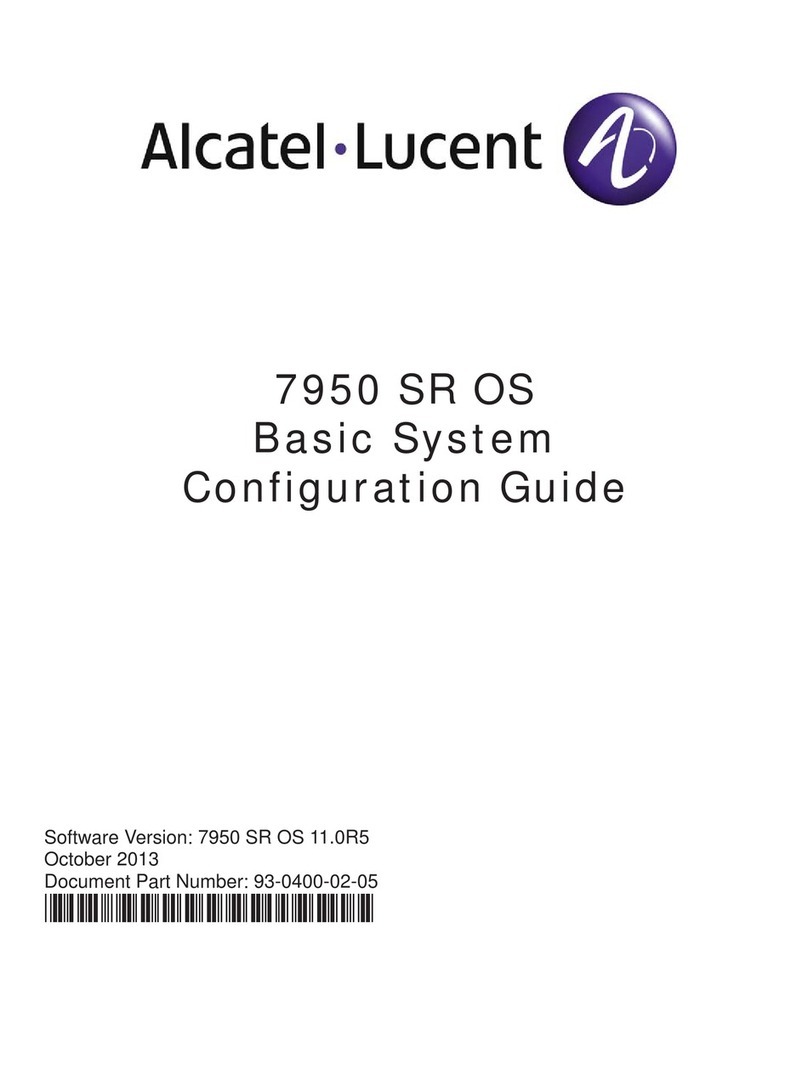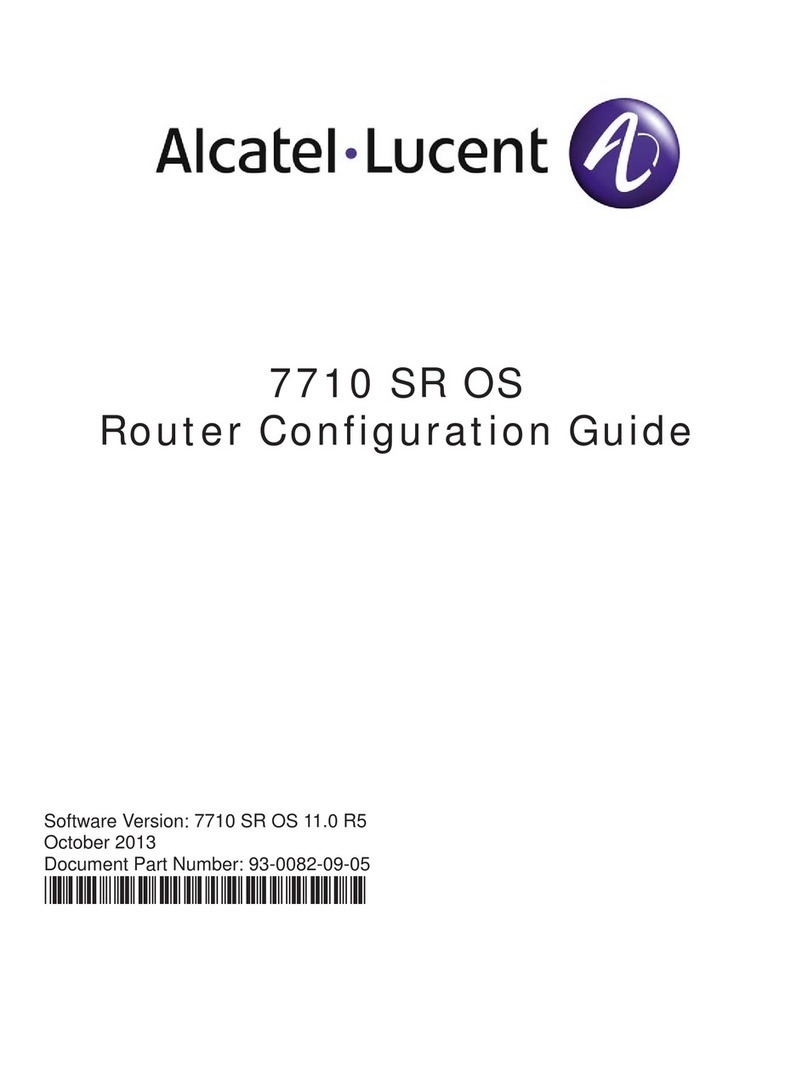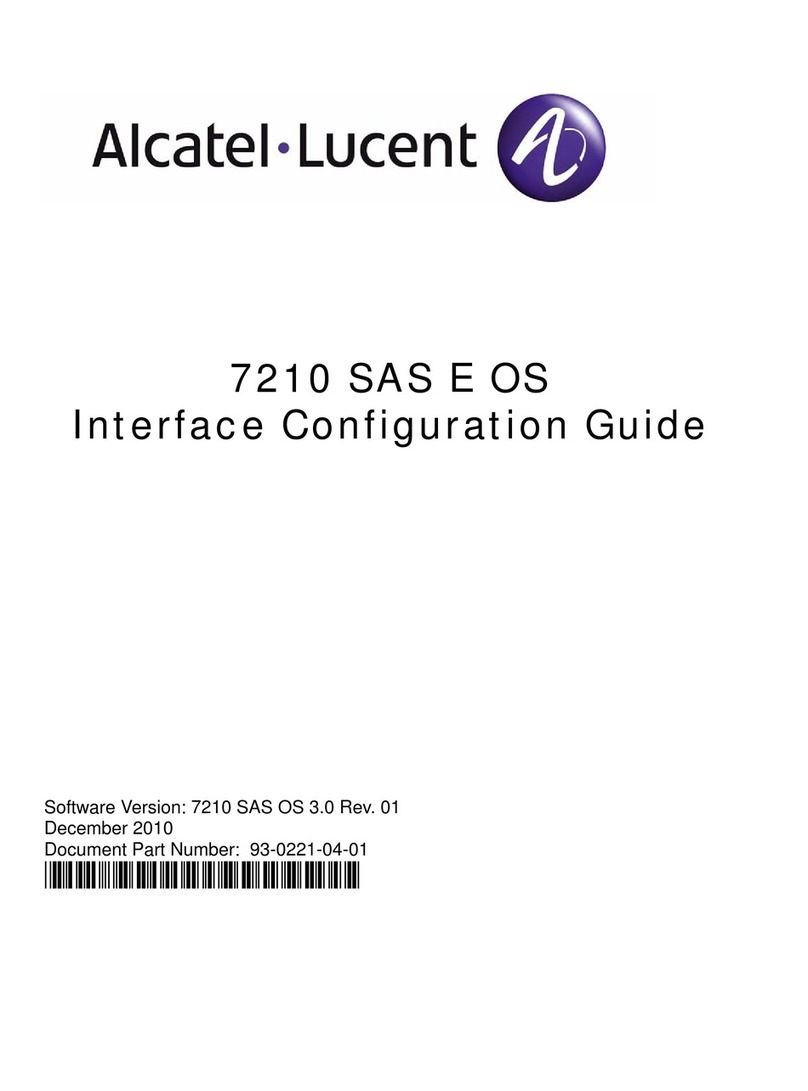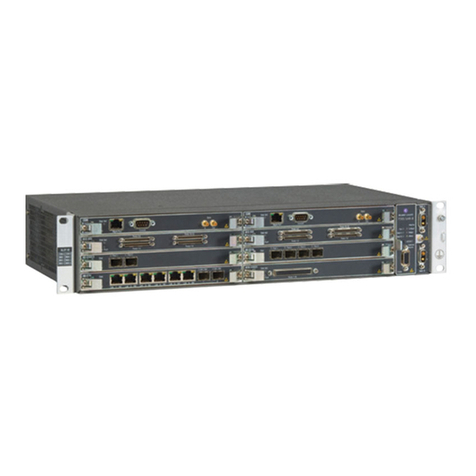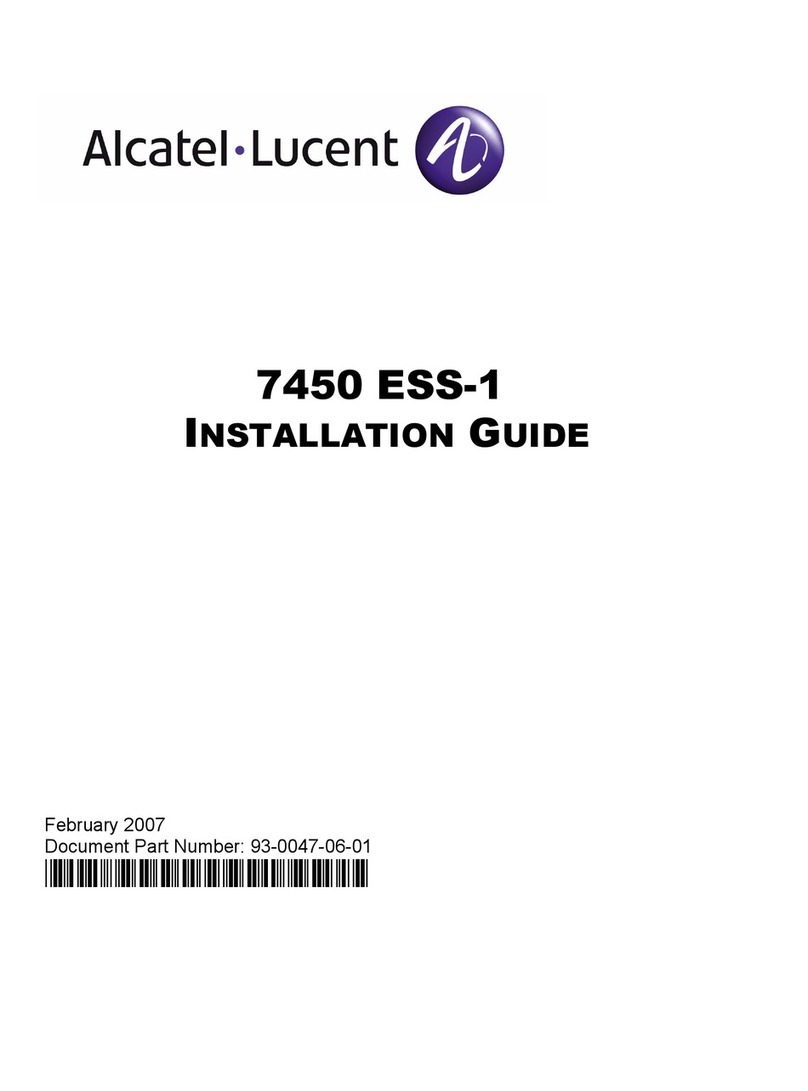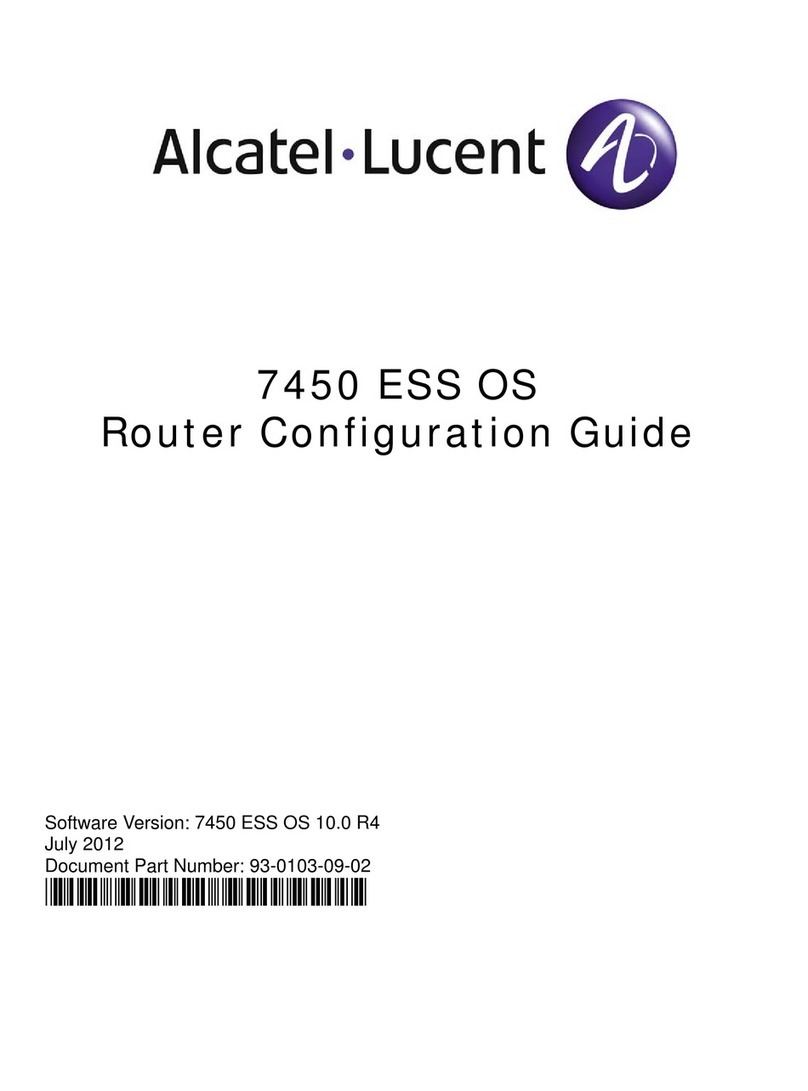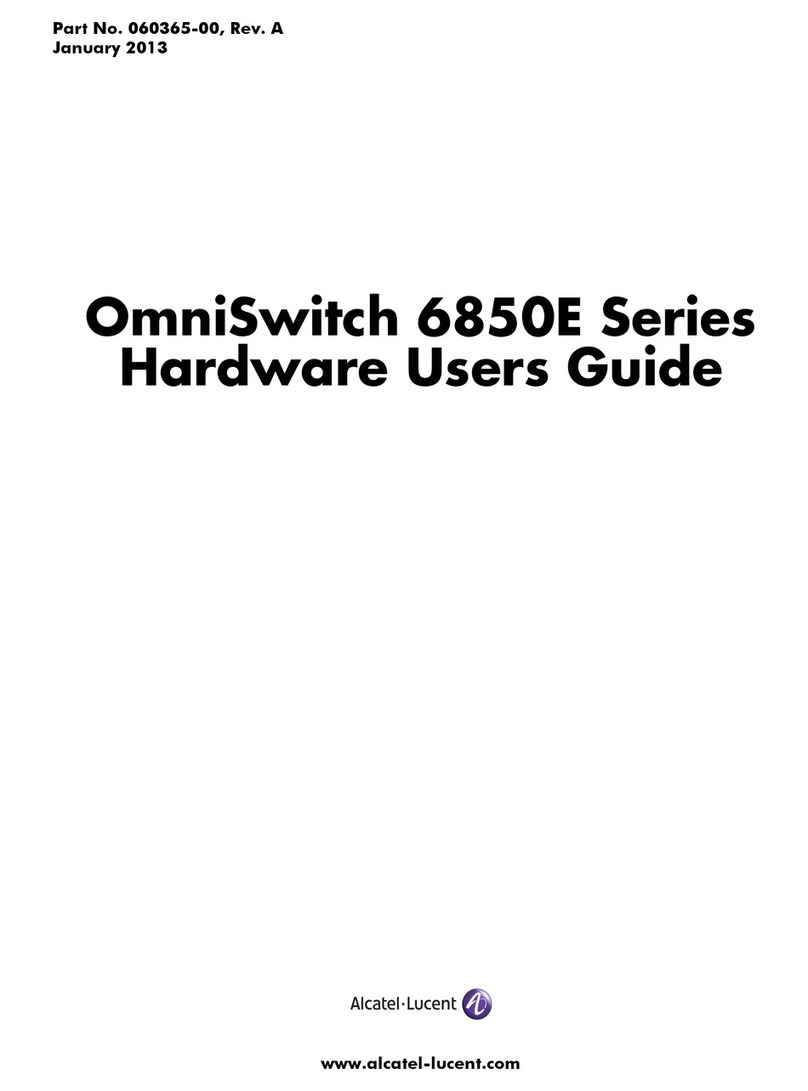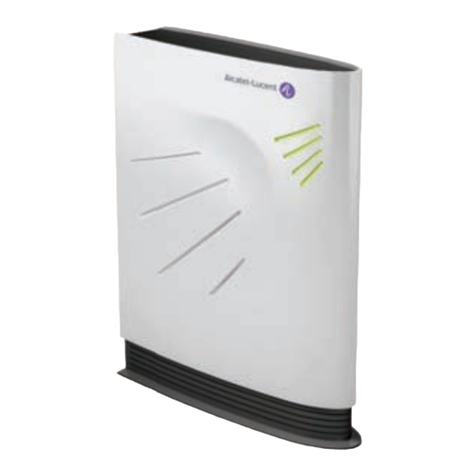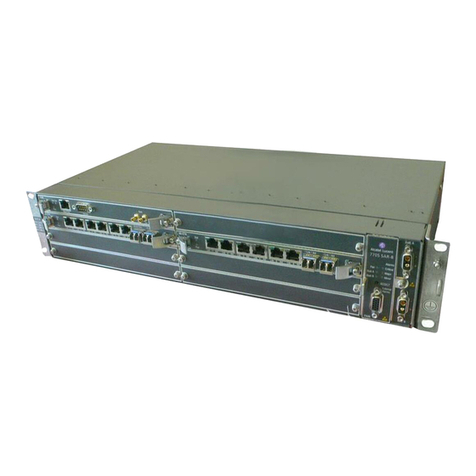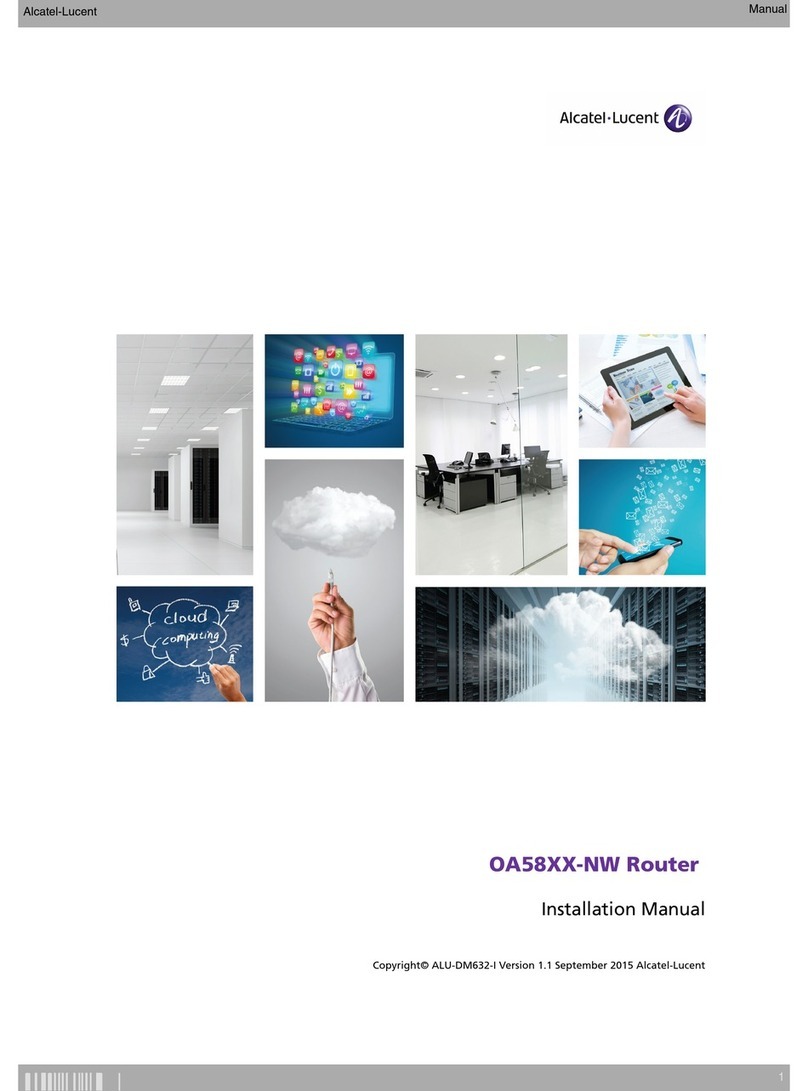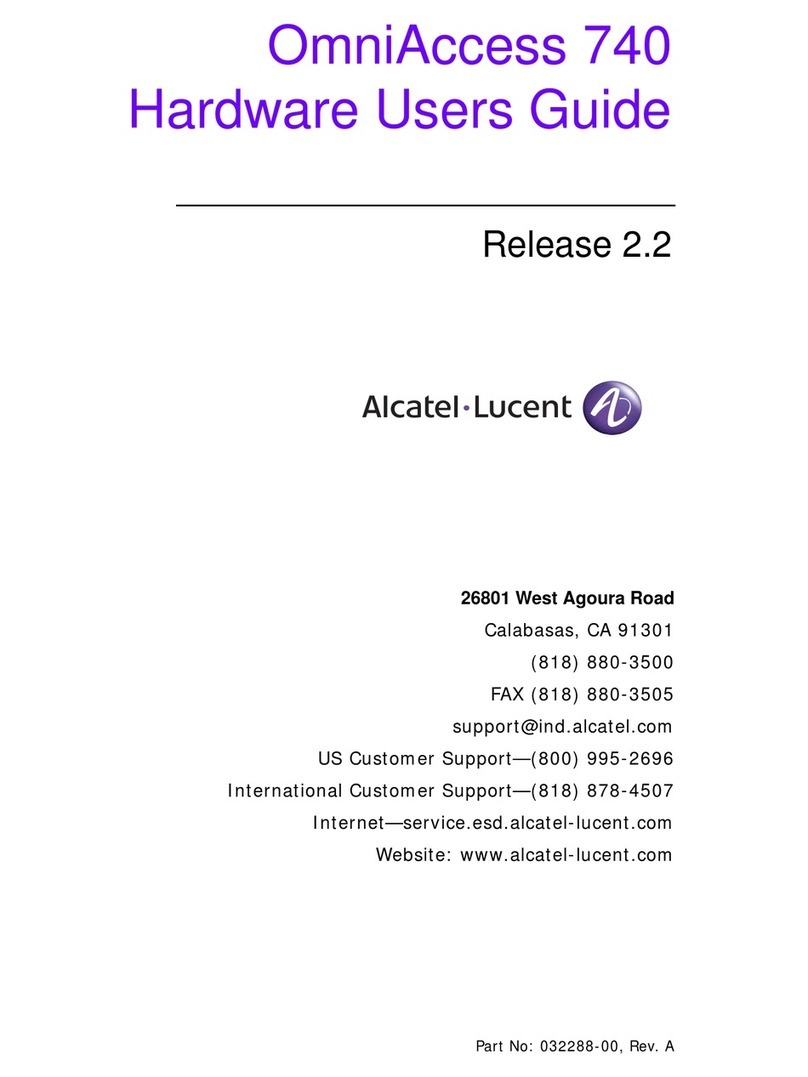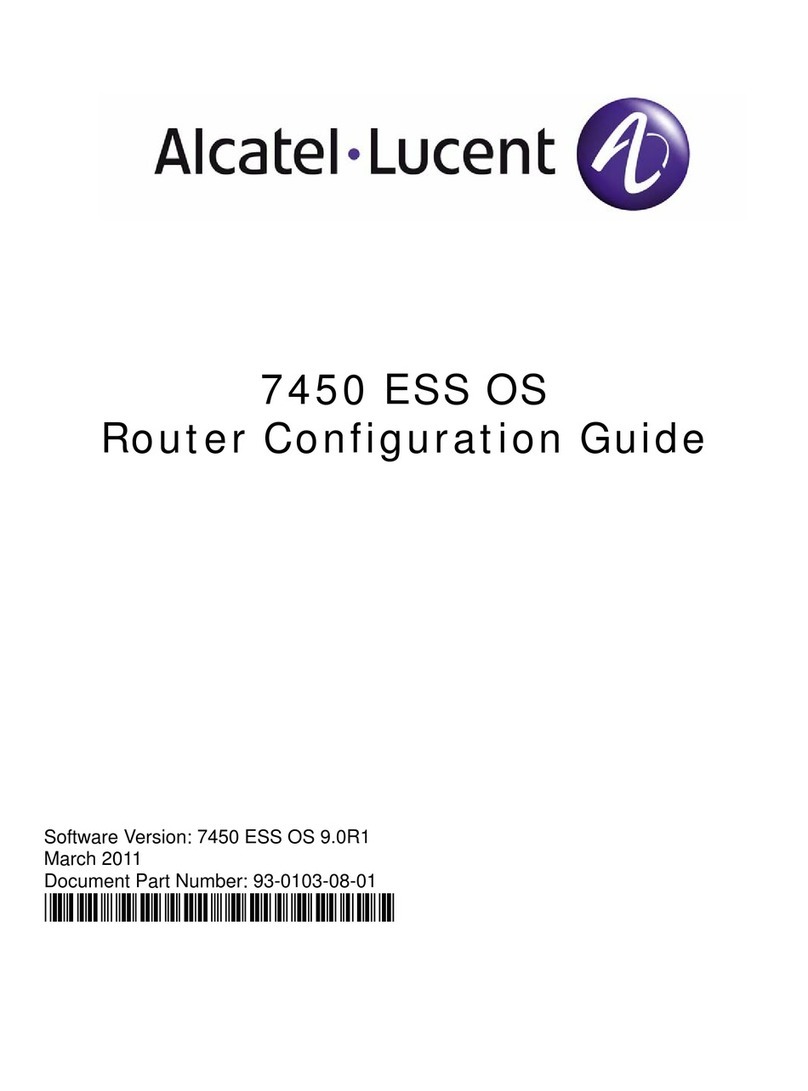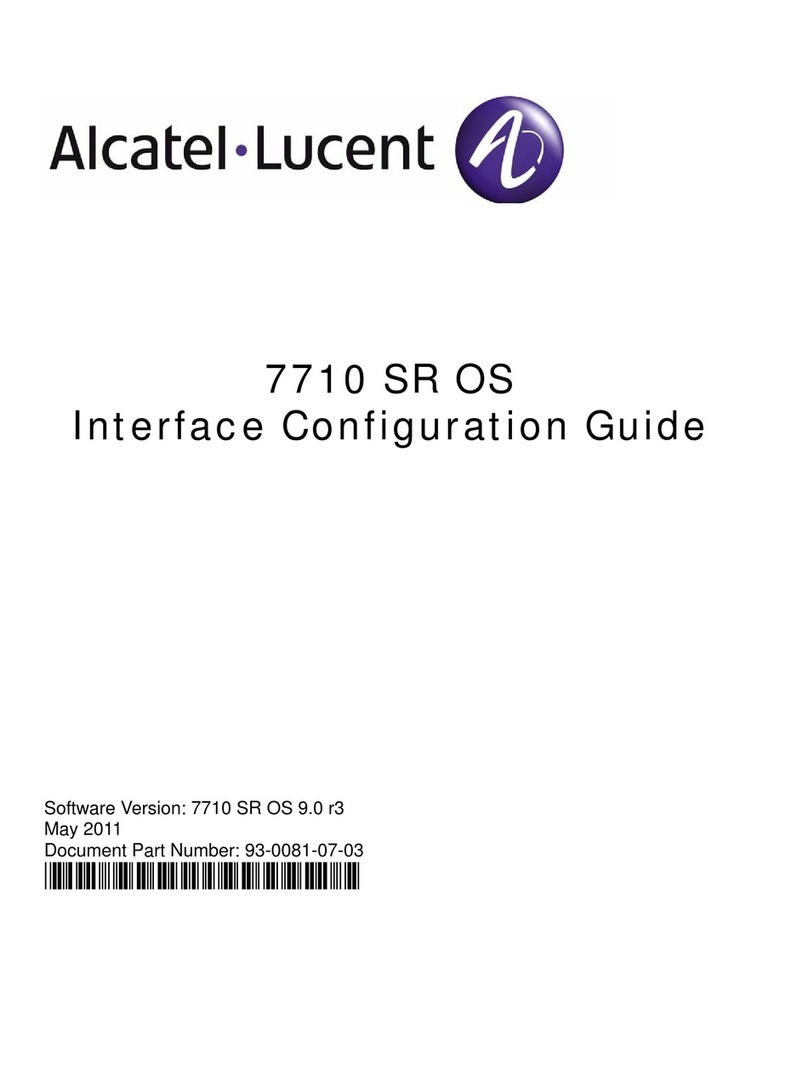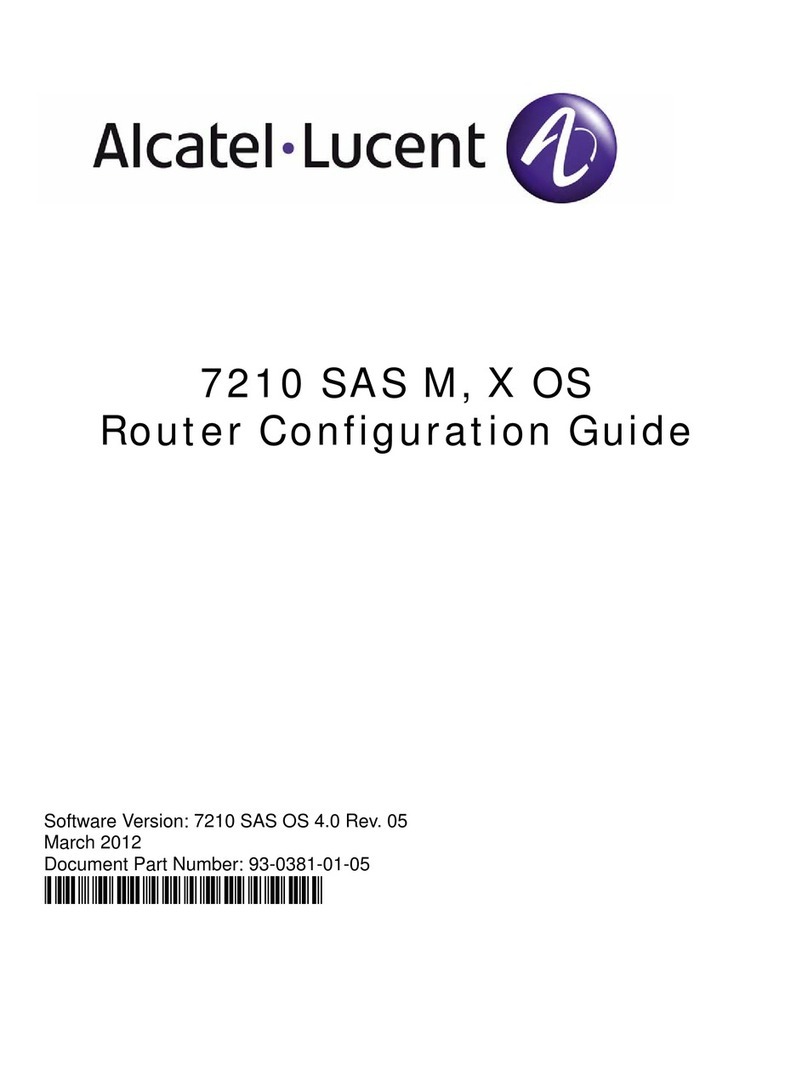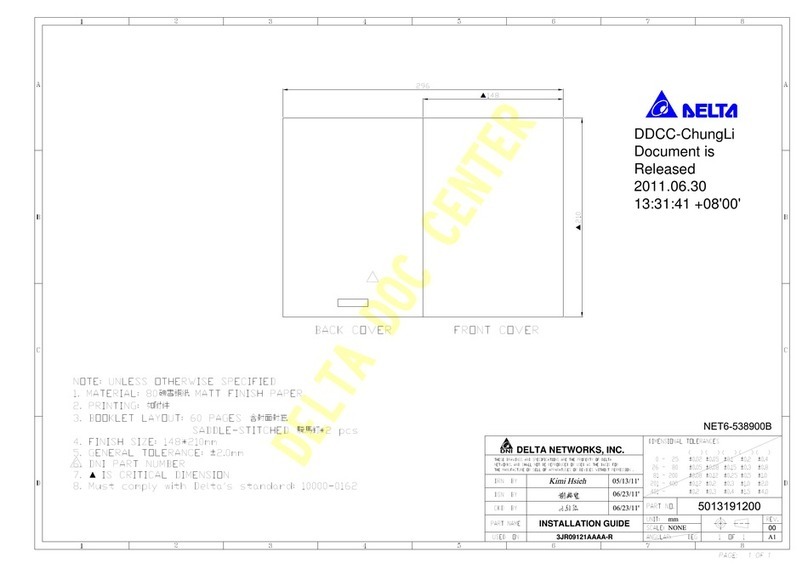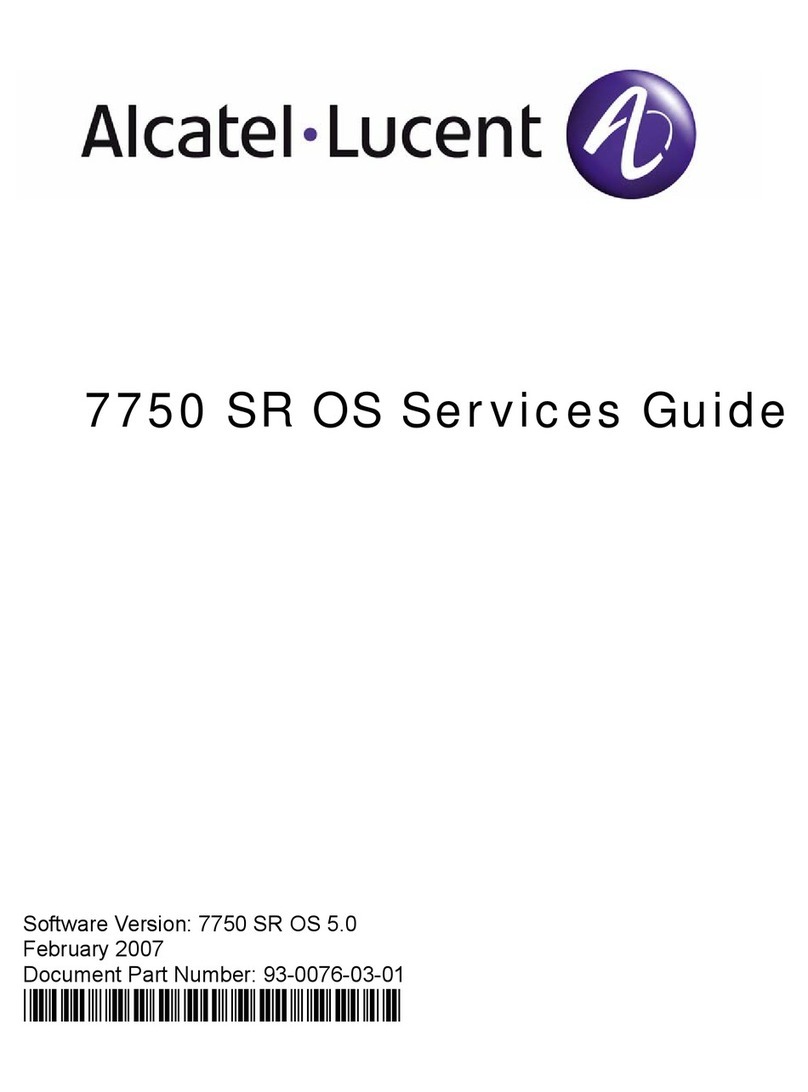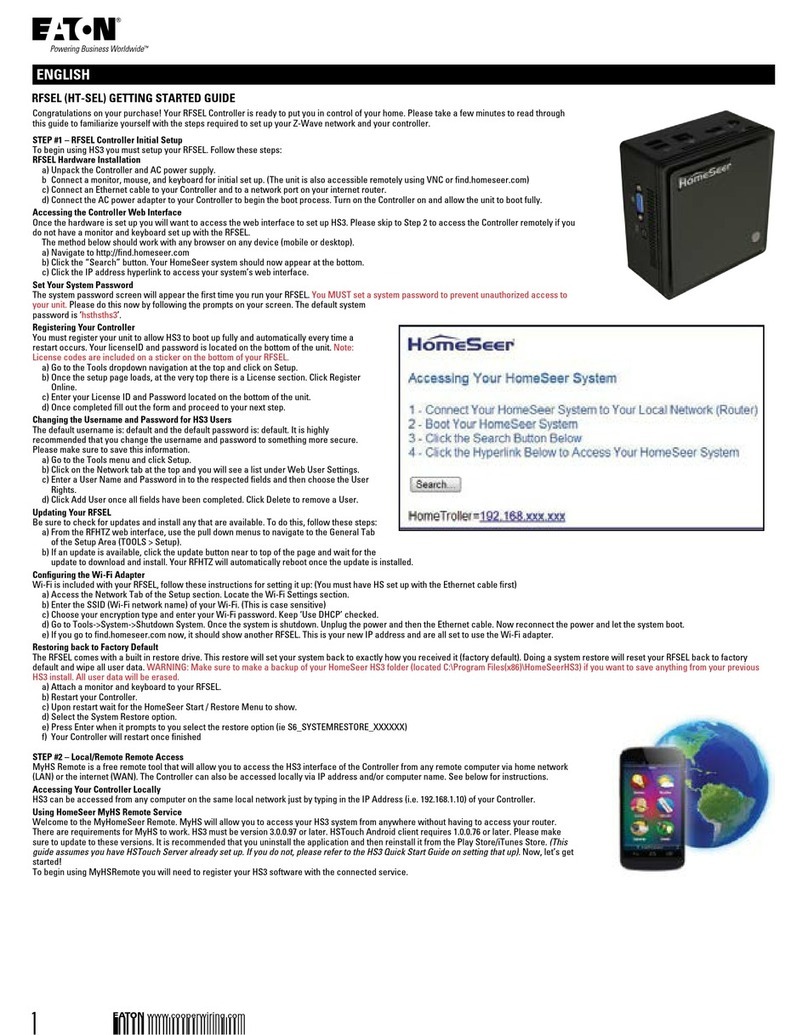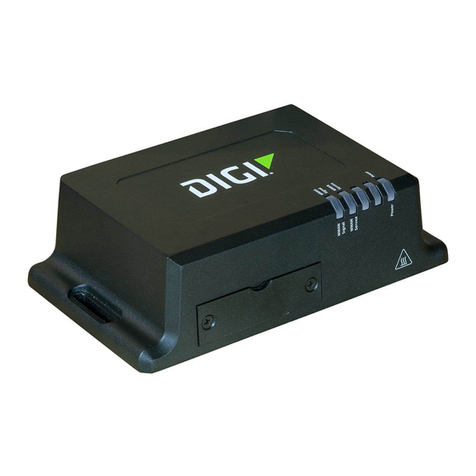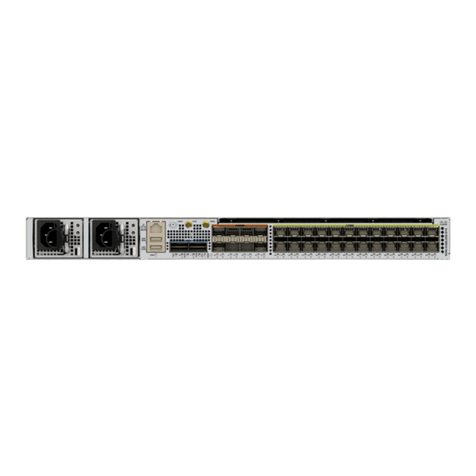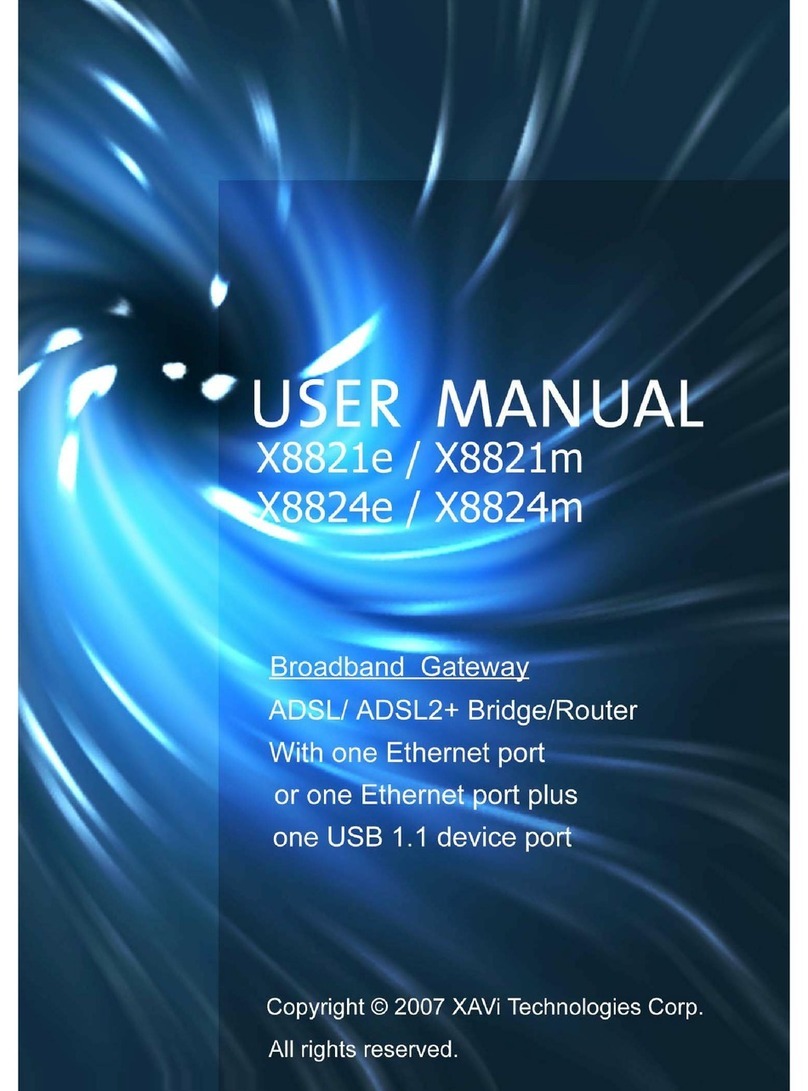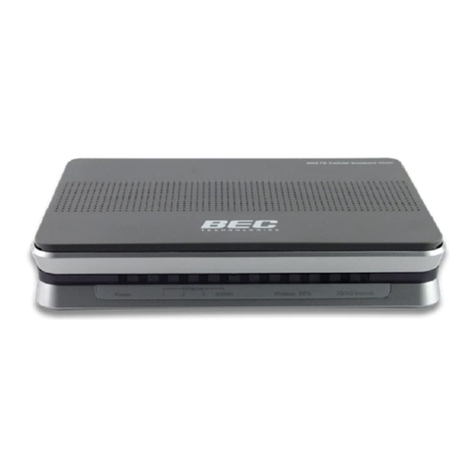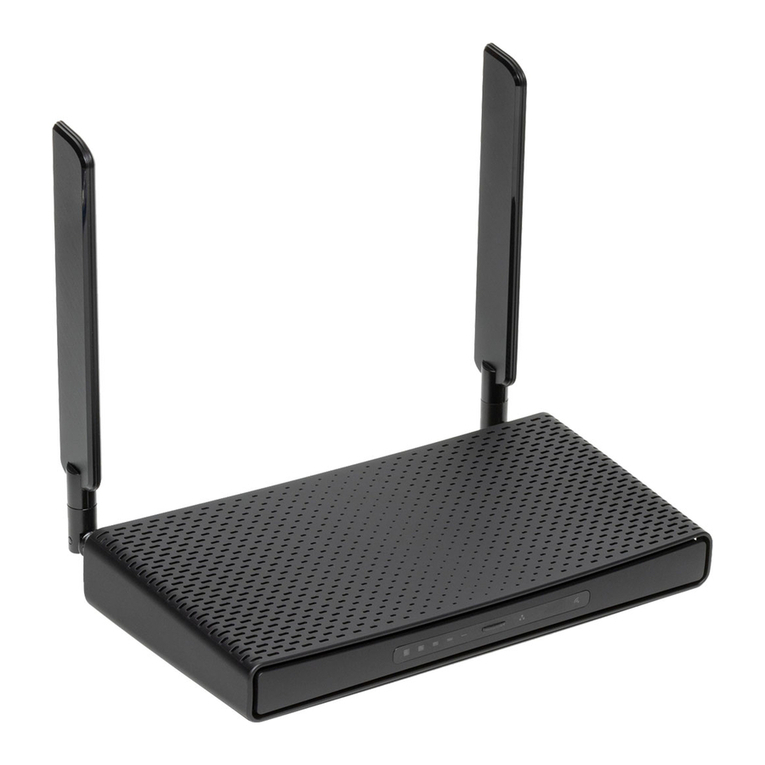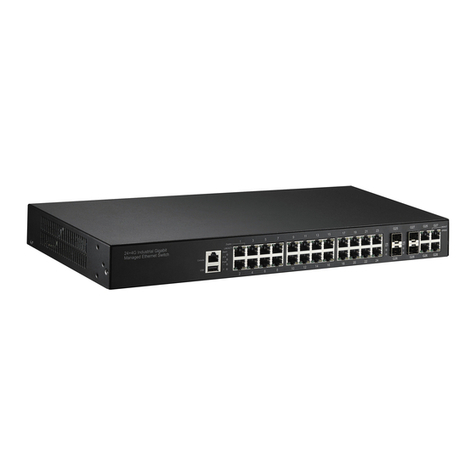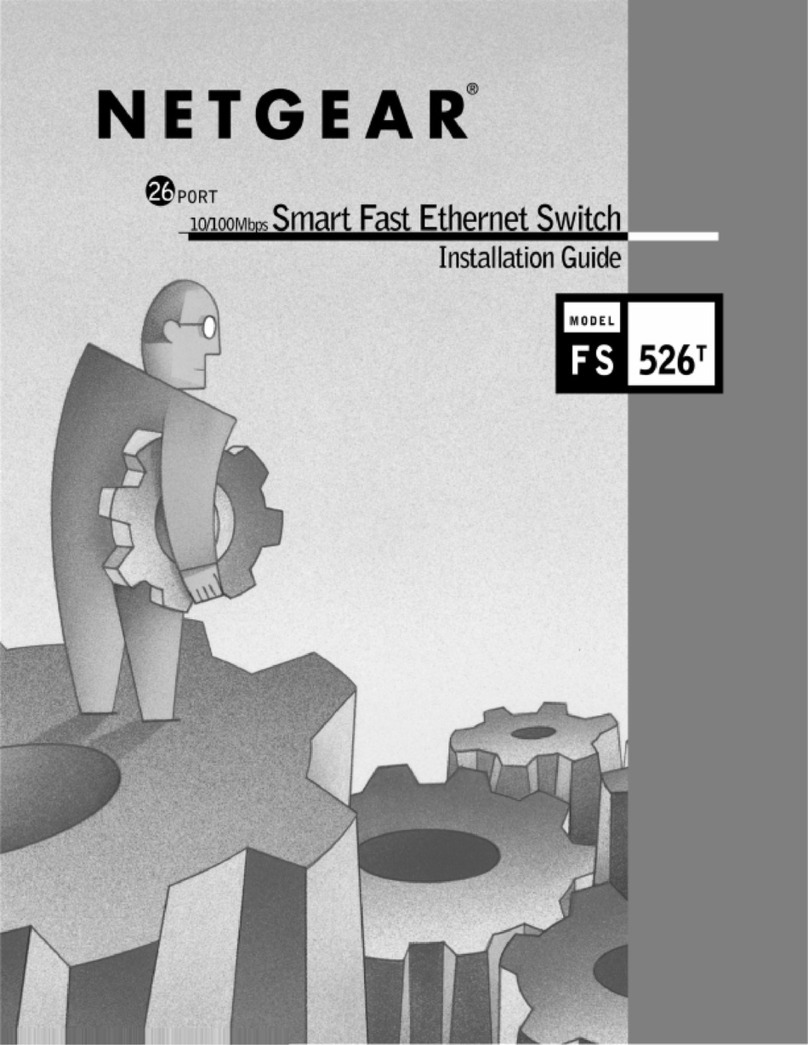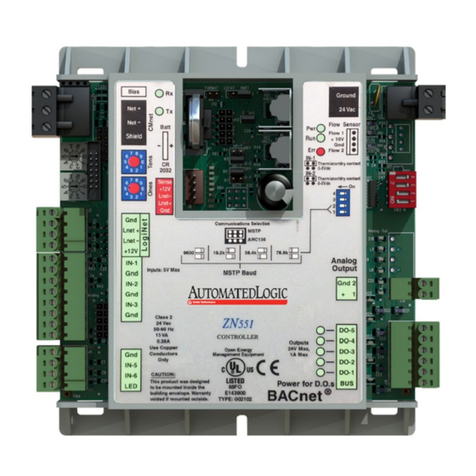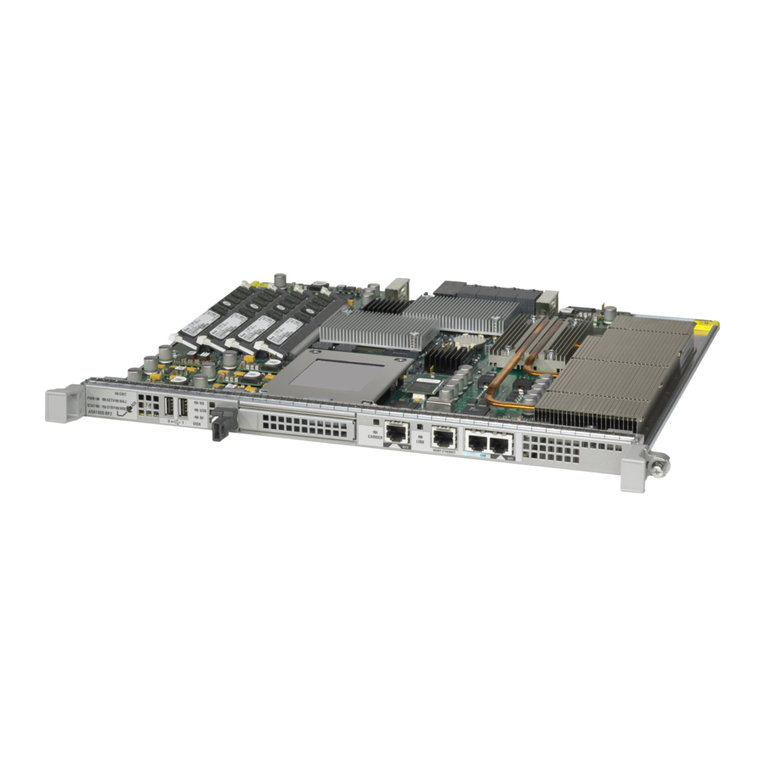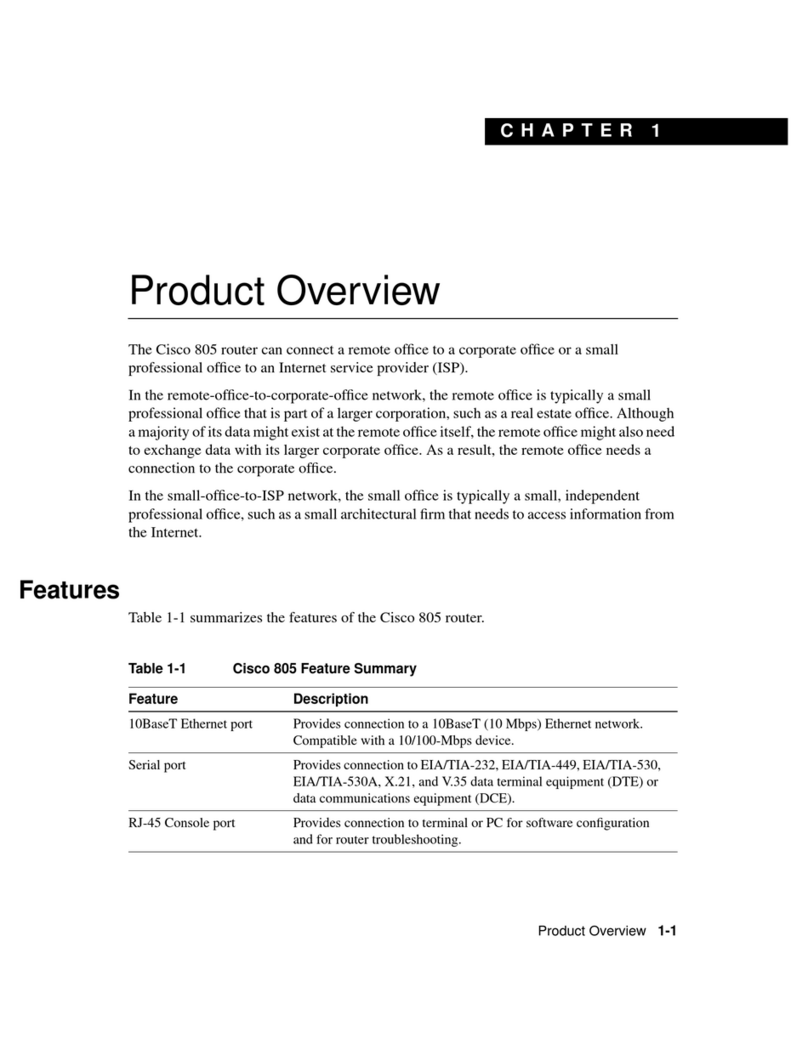3HE 10325 AAAA TQZZA Edition 01
December 2015
59 (option)
Initialize using
Auto Discovery
Protocol (ADP)
y y y y n y y y y y
60 Assign an IP
address to the
management
port
y y y y n y y y y y
61 Configure static
routes in the
Boot Option File
(BOF)
y y y y n y y y y y
62 Connect to the
management
port (local or
network)
y y y y n y y y y y
63 Run a Telnet or
SSH session
y y y y n y y y y y
64 Configure in-
band
management
access
n n n n n y n n n n
Commission the system
65 Configure the
IOM on the
CSM(s)
n(9) n(9) n(9) n(9) nn(9) n(9) n(9) y y
66 Configure the
MDAs (adapter
cards)
n(9) n(9) n(9) n(9) nn(9) n(9) n(9) y y
67 Configure the
modules
n y n y n n n n n n
68 Configure
SNMP
y y y y n y y y y y
69 Set the router
name, date,
and time
y y y y n y y y y y
70 Configure
synchronization
y y y y n y y y y y
Table 1: Installing, Provisioning, and Commissioning a 7705 SAR System (Continued)
Item SAR-
A
SAR-
H
SAR-
Hc
SAR-
M
SAR-
O
SAR-
W
SAR-
WxSAR-
X
SAR-
8
SAR-
18
Notes:
(1) Applies to the grounding requirement only.
(2) Standard installation configuration consists of forward-facing flush-mount installation in a
19-inch equipment rack.
(3) If installing a SAR-O or SAR-W on a wall or pole, install the bracket on the wall or pole
first, then install the SAR-O or SAR-W in the bracket.
(4) Applies to SAR-W variants equipped with GPS receivers only.
(5) Applies to units equipped with a GNSS receiver port, module, or card only.
(6) For power substation and railway network applications (i.e. IEEE 1613 and IEC 61850-3
compliance).
(7) Applies to the Power Injector Card only.
(8) Applies to units equipped with a 4-port T1/E1 and RS-232 Combination module only.
(9) The IOM and MDAs are preconfigured by the 7705 SAR and are not user-configurable.
Installation Site Assessment
Before installing equipment at a site, the characteristics of the site should be considered to
determine whether they will adversely affect the reliability of the equipment. The following
section discusses some of the site factors to consider prior to deploying equipment.
Geographical Location
Different geographical locations carry different risk factors. For example, coastal installations
with prevailing winds from the sea may be affected by Airborne Sea Salt Particles (ASSP),
which can be carried many kilometers inland. As well, installations near ancient seabeds that
have very high levels of salt in the soil may be affected by ASSP during windy drought
conditions. Mountainous regions near coasts cause unique fog conditions. High humidity
environments often cross dew point thresholds at night.
Consider whether the installation site is in an area that has the potential to experience any of
the following seasonal influences: hurricanes, cyclones, tidal or river flooding, recent volcanic
activity, or forest fires.
Examine the local surrounding environment of the installation site for proximity to possible
sources of contaminants that may cause or accelerate corrosion, especially in the presence of
high humidity.
Possible sources of contaminants include: landfills, fertilizer manufacturing, farming, sewage,
geothermal activity, swamps or marshes, oceans, ancient seabeds, power generation,
automotive and diesel combustion, fossil fuel processing, cement plants, construction sites,
steel blast furnaces, steel electric furnaces, coke plants, pulp manufacturing, chlorine plants,
rubber manufacturing, paint manufacturing, aluminum manufacturing, ore smelting, tobacco
smoke, and battery manufacturing.
If there is any uncertainty surrounding the concentration of various contaminants at the
installation site, then Corrosion Classification Coupons may be used to classify the severity of
the environment according to the standard ISA 71.04.
Installation Site Type
The site must provide the appropriate environment for the installed equipment. This usually
involves controlling ingress of contaminants and ensuring that humidity remains as low as
possible.
Installations are typically in a hut, parking garage, room, or cabinet. Installation in data
centers or telecom centers do not usually have high pollution levels but could still have high
humidity levels.
• Room
Is the room connected to the heating, ventilation, and air conditioning (HVAC) system of
the building? What protection is there to prevent ingress of dust, pollution, and humidity?
To seal the environment properly, ensure that any doors, windows, vents, holes, or
conduits are sealed or gasketed appropriately to ensure that the HVAC system can control
the environment. These must be checked as part of routine site maintenance.
If outside air is brought in for ventilation, does it pass through a filter? What is the type
and rating of the filter? Filters can help but the type of filter must be appropriate for the
pollutants you are trying to exclude. For example, a standard fiberglass type air filter only
prevents large debris and dirt from entering, but will do nothing to prevent entry of small
particles (such as ASSP), humid air or gaseous contaminants. It is important to understand
the local conditions and consider what type of filtering is most appropriate. Minimum
Efficiency Reporting Value (MERV) charts may serve as a good source to understand
particle sizes and filter options.
One simple yet effective way to keep pollutants out is to ensure that positive pressure is
maintained inside the room or cabinet as compared to the outside by having fans blowing
properly filtered air into the room.
Does the site have an air conditioner or dehumidifier? Is the rating and capacity adequate
for the space? Where does the dehumidifier or air conditioner water drainage go?
Humidity reduction is one of the key elements in corrosion control. Air conditioners and
dehumidifiers are recommended to reduce local relative humidity at the site. Another
method is to keep the temperature in the cabinet high enough to maintain the relative
humidity at less than 50%. Condensate, if allowed to stay in the site or enclosure, will
evaporate over time and lead to higher relative humidity and corrosion.
•Cabinet
There are 3 major classifications of cabinets.
1. Direct Air Cooled (DAC) cabinets bring air into the cabinet to cool the equipment. DAC
cabinets may or may not be filtered. Unfiltered air intake and exhaust is not recommended
since issues will occur if unfiltered air is allowed into the cabinet. The ideal filter is a
hydrophobic filter (GORE) since it filters particles smaller than 1 micron. Hydrophobic
filters will prevent passage of water droplets but still allow water vapor to pass. Some
chemical pollutants may require carbon or other types of filters particularly suited to the
type of pollution.
71 Configure an
NTP server
y y y y n y y y y y
72 Configure
security
y y y y n y y y y y
73 Create initial
users for node
commissioning
y y y y n y y y y y
74 Configure an
OAM reference
point
y y y y n y y y y y
Verify the system
75 Check alarms y y y y n y y y y y
Table 1: Installing, Provisioning, and Commissioning a 7705 SAR System (Continued)
Item SAR-
A
SAR-
H
SAR-
Hc
SAR-
M
SAR-
O
SAR-
W
SAR-
WxSAR-
X
SAR-
8
SAR-
18
